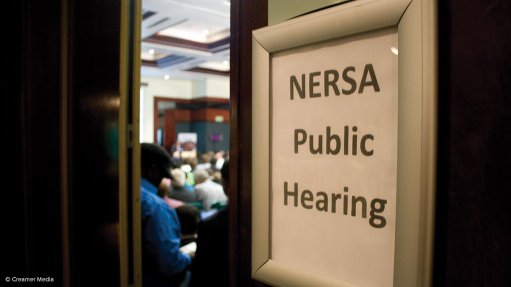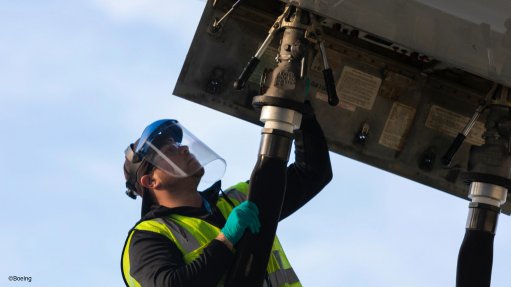All our patents belong to you – or do they?
By Herman van Schalkwyk
Using crafty wordplay on a well-known Internet meme, brilliant South African-born US entrepreneur and businessperson Elon Musk announced that Tesla Motors would not initiate patent lawsuits against anyone who, in good faith, wanted to use its technology. Instead, Tesla Motors would only use its patents defensively. In a symbolic move towards an open-source approach to technology development, Tesla Motors has even gone as far as taking down its wall of patents in the lobby of its Palo Alto headquarters. What does this mean for the electric motor vehicle industry? Should local companies in the technology sector follow suit?
To answer these questions, it is important to consider the legal effect of this shift towards a quasi-open-source position. Firstly, it is important to appreciate that Tesla Motors is by no means abandoning its existing patents – well, not yet. Taking down its patent wall does not constitute an abandonment of its patent rights. For this, Tesla Motors will have to abandon its patents at the various patent offices across the world. This ties in with the proviso in Tesla Motors’ statement that it will not take legal action against anybody who, in good faith, uses its patented technology. This statement clearly distinguishes between infringement of patent rights in good faith and infringement in bad faith. At which point will Tesla Motors decide that competition has hit too close to home, that bona fide use of its technology has turned into mala fide use that justifies an infringement lawsuit? Maybe this point will come when one of the large vehicle manufacturers competes with Tesla Motors using Tesla’s own technology. However, Musk does not seem to be bothered by this.
From his entry on the Tesla Motors blog, it appears he is convinced that the real enemy is hydrocarbon-burning engines and that the electric vehicle market is large enough for all to tap into. This move by Tesla Motors might just be a ploy to ensure that the bulk of the electric vehicle industry is built on Tesla Motors technology.
By making Tesla Motors technology available to everyone, presumably including the large motor vehicle manufacturers, there is a real possibility that it will be used as the base on which future electric vehicles are built. Should this happen, Tesla Motors could be in the driving seat, so to speak. It is also safe to assume that, while the rest of the vehicle manufacturing industry designs its electric vehicles on existing Tesla technology, Tesla Motors would, without a doubt, look to employ the very best engineering minds to guarantee that it remains at the cutting edge of electric vehicle technology. This, again, fits into the intellectual property strategy that it has adopted, as the filing of patent applications ultimately requires the technology to be published. Such publication would disclose the latest technology to Tesla Motors’ competitors. This latest move by Tesla could, therefore, also be seen as a shift in intellectual property strategy from one of patenting its most valuable technology towards one of keeping it internally as know-how. These two strategies are mutually exclusive. You can either patent your technology, which would grant you a 20-year monopoly in exchange for the publication of the technology, or you could seek to keep your technology secret so that it is out of reach of your competitors.
Although the second option might seem attractive, and in some instances it is the correct strategy to employ, most companies should be careful when adopting this stance. This secret body of valuable and not readily ascertainable knowledge, which is referred to as know-how, is only protectable for as long as it remains confidential. Should the technology fall into the public domain, it no longer forms part of the company’s know-how and, thus, is free to be used by everyone.
This brings us to another aspect of intellectual property, which often comes as a surprise to many inventors: copying is allowable in terms of South African law, provided such copying does not infringe on the statutory or common law rights of the proprietor of the technology. For example, the South African Copyright Act specifically makes provision for reverse engineering. In terms of Section 15(3A), a person is allowed to make a reproduction of a three-dimensional product if that product has a utilitarian purpose and was released into the market by the rightful owner. Using Tesla Motors as an example, should it release a product into the market that is not protected by any registered right, its competitors are allowed to make such a product without there being any recourse available to Tesla Motors. It should, therefore, come as no surprise that most patent attorneys would advise their clients not to follow Tesla Motors’ example without careful consideration.
In his blog entry, Musk also stated boldly: “Receiving a patent really just meant that you bought a lottery ticket to a lawsuit.” There is some truth in this. After all, patent rights are negative rights in that a patentee has the right to exclude others from commercially exploiting the patented technology.
There are no patent police looking to enforce a patentee’s rights. The decision regarding against whom to enforce patent rights always vests with the patentee. However, by obtaining patent rights, a patentee not only ‘buys a ticket to a lawsuit’ but also buys a ‘ticket to the negotiation table’. Patent litigation, at the best of times, is an expensive exercise and, in many instances, is suitable to both parties around the negotiation table to settle out of court. For example, patent rights often form the basis of licence agreements that in effect make the infringement of the patentee’s rights lawful provided that royalties, if it is not a royalty-free licence, are paid to the patentee.
Without patent rights, an inventor, in most instances, misses out on an invitation to the negotiation table.
Returning to the case of Tesla Motors, its decision not to abandon its patent rights formally might seem to suggest that it is still intent on joining the discussions around the negotiation table. Bona fide use of Tesla Motors’ technology might just embody licensing its patented technology to other manufacturers. This is pure speculation but, either way, Tesla Motors definitely stands to gain in a rapid rise in the production of electric vehicles based on its technology.
There is also a point of view that, for Tesla Motors to benefit to the full extent, it has to ensure that the boom in electric vehicle technology takes place while it is at the pinnacle of its technology development, and preferably while the bulk of its patents are still in force. The term of a patent is 20 years, after which the technology is free for commercial exploitation by everyone. This latest decision by Musk might, therefore, just be an ingenious way of speeding up the development cycle of electric vehicles so that Tesla Motors sees the maximum benefit before the expiration of its patents.
At this point, we can only speculate on the extent to which Tesla Motors is willing to allow bona fide use of its patents. The true reflection of Tesla Motors’ and, in particular, Musk’s opinion on the patent system will only be revealed in due course. It will be interesting to see whether or not Tesla Motors files any new patent applications going forward. In the meantime, however, from a patent attorney’s perspective, this decision is a clever use of the patent system rather than a shift away from it.
Van Schalkwyk is a patent attorney and senior associate at law firm Spoor and Fisher
Comments
Press Office
Announcements
What's On
Subscribe to improve your user experience...
Option 1 (equivalent of R125 a month):
Receive a weekly copy of Creamer Media's Engineering News & Mining Weekly magazine
(print copy for those in South Africa and e-magazine for those outside of South Africa)
Receive daily email newsletters
Access to full search results
Access archive of magazine back copies
Access to Projects in Progress
Access to ONE Research Report of your choice in PDF format
Option 2 (equivalent of R375 a month):
All benefits from Option 1
PLUS
Access to Creamer Media's Research Channel Africa for ALL Research Reports, in PDF format, on various industrial and mining sectors
including Electricity; Water; Energy Transition; Hydrogen; Roads, Rail and Ports; Coal; Gold; Platinum; Battery Metals; etc.
Already a subscriber?
Forgotten your password?
Receive weekly copy of Creamer Media's Engineering News & Mining Weekly magazine (print copy for those in South Africa and e-magazine for those outside of South Africa)
➕
Recieve daily email newsletters
➕
Access to full search results
➕
Access archive of magazine back copies
➕
Access to Projects in Progress
➕
Access to ONE Research Report of your choice in PDF format
RESEARCH CHANNEL AFRICA
R4500 (equivalent of R375 a month)
SUBSCRIBEAll benefits from Option 1
➕
Access to Creamer Media's Research Channel Africa for ALL Research Reports on various industrial and mining sectors, in PDF format, including on:
Electricity
➕
Water
➕
Energy Transition
➕
Hydrogen
➕
Roads, Rail and Ports
➕
Coal
➕
Gold
➕
Platinum
➕
Battery Metals
➕
etc.
Receive all benefits from Option 1 or Option 2 delivered to numerous people at your company
➕
Multiple User names and Passwords for simultaneous log-ins
➕
Intranet integration access to all in your organisation


















